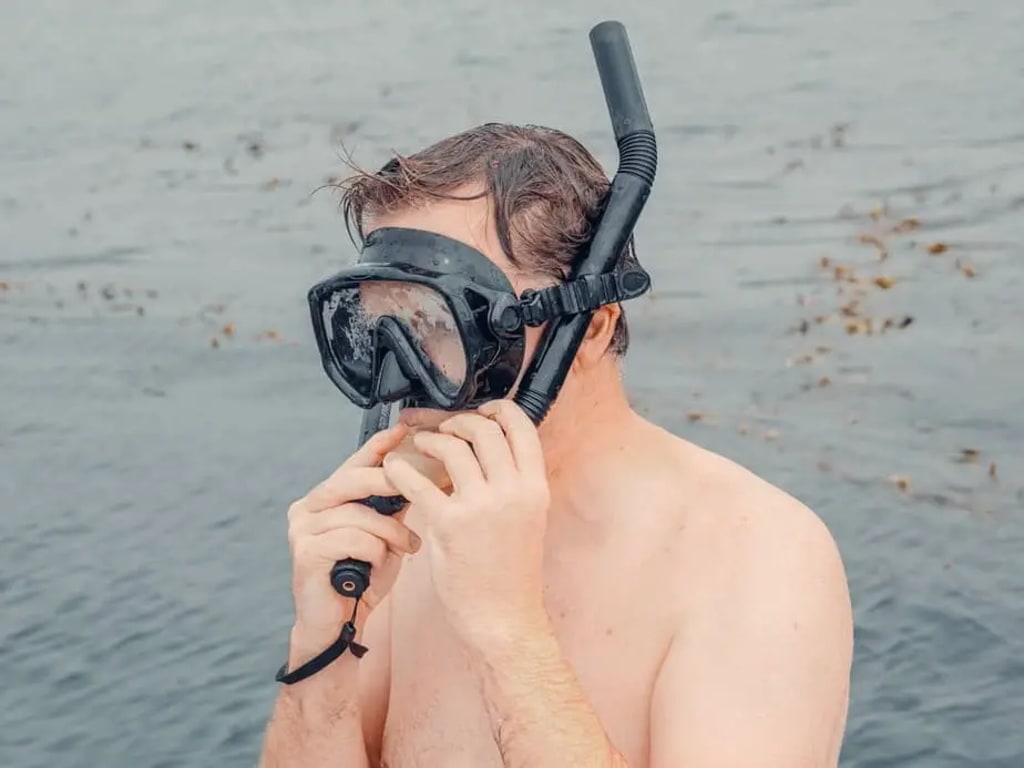WHY ARE SNORKELS SO SHORT?
Why Are Snorkels So Short?

It's summertime! Time to break out the snorkeling gear and experience the joy of breathing underwater, maybe even watching some adorable fishies. But maybe I'd experience a little more joy if snorkels weren't so darn short!
As it turns out, though, there are a few very good reasons for why the longest working snorkel is shorter than you might hope. First up is our obligatory reference to that classic Queen and David Bowie ditty, Under Pressure. Breathing is all about air pressure. When you inhale, your diaphragm and all the muscles between your ribs indirectly expand your lungs, creating a negative pressure which makes air rush in from outside. To do that, your muscles normally just have to fight against the air pressure outside of your body pushing against your ribs in all directions. But water is almost a thousand times more dense than air. So it's a lot harder to move out of the way.
If you're underwater, you only have to go down about one meter before your muscles cannot overcome the water pressure squeezing your ribcage like a closed fist on a balloon. So for health and safety reasons, many countries restrict snorkel lengths to something shorter than that. But even if you could make your lungs fully inflate at much lower depths, they can only pull and push so much air. If your snorkel had a greater volume than your lungs, then all your exhaled breaths would stay trapped inside the tube, and every inhale you take would be that same air. Now, that might be ok for a few breaths, but very quickly you'd run out of oxygen.
By making some very generous assumptions about how well we can absorb oxygen, one team of physicists reported the maximum snorkel volume should be 3.4 liters. With a fairly typical 2-centimeter wide tube, this would limit you to a length of 10.8 meters. Which is far longer than your breathing muscles would ever allow, but there's another problem. Because the air has to rub against the walls of the snorkel, there would be a lot more resistance as the tube got longer. Which means that you'd have to exert more pressure to get the air to move. You could make it easier by having a larger diameter snorkel, like a boba straw, but to keep to that maximum volume, you'd have to shorten the total length. But after all of that, ignoring the physics of pressure and the medical problems with breathing stale air, a long snorkel would just be really inconvenient. Like, I am imagining trying to maneuver with a several-meter long snorkel sticking out of my mouth, trying to keep it at the top of the surface, while I'm down there and it's trying to go backwards. And if your snorkel is made out of something that's buoyant like plastic, the longer it is, the more you'd have to work against the buoyant force pulling you toward the surface. Taking this into account, those same physicists came up with a maximum length of 2.7 meters. Which again, you'd need some sort of mild superstrength to breathe through it that far below the surface. Ultimately, a safe snorkel shouldn't be much longer than 35 centimeters or so. If you want to go any deeper while still breathing, just look into SCUBA!
About the Creator
Enjoyed the story? Support the Creator.
Subscribe for free to receive all their stories in your feed. You could also pledge your support or give them a one-off tip, letting them know you appreciate their work.





Comments
There are no comments for this story
Be the first to respond and start the conversation.